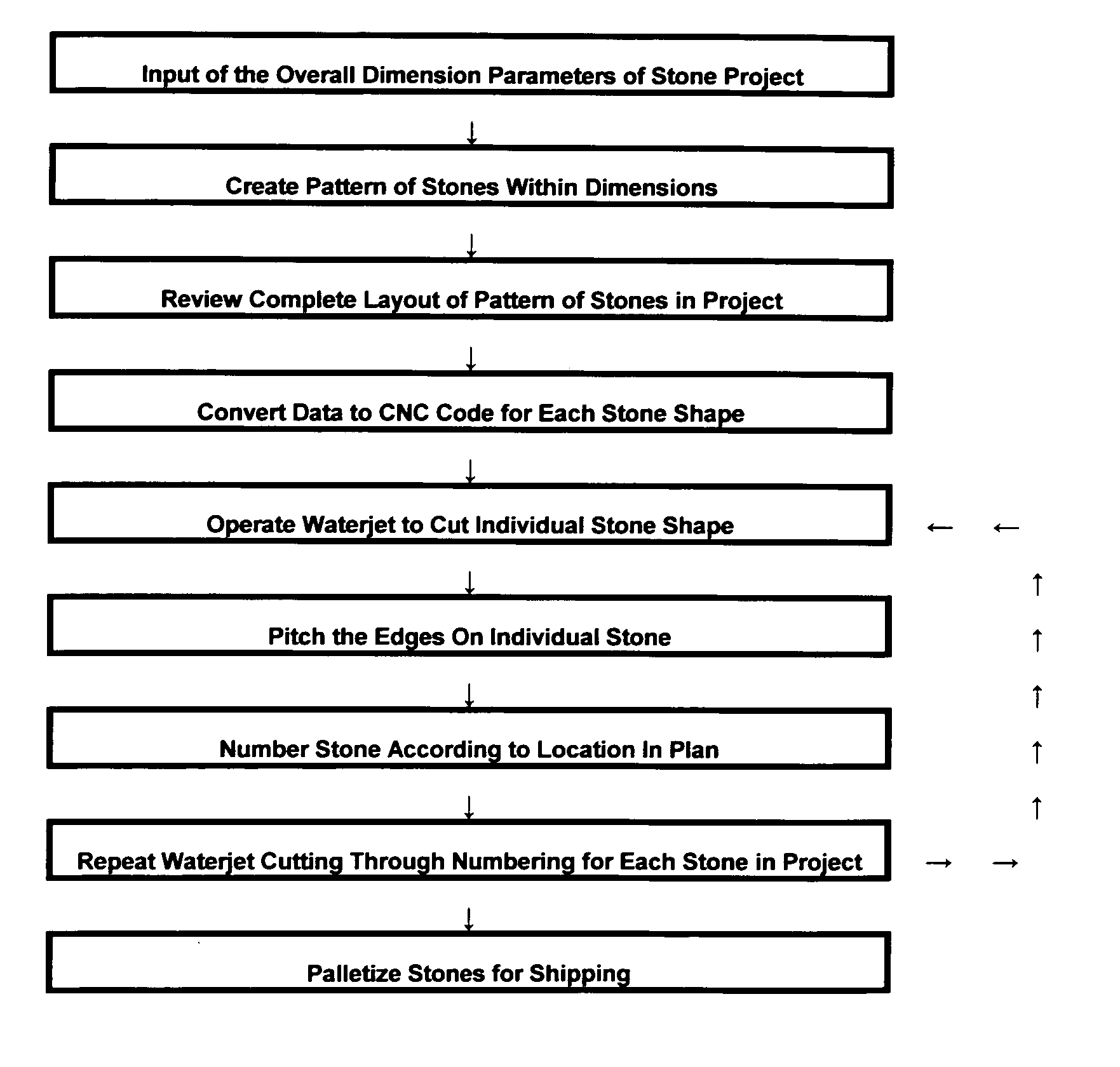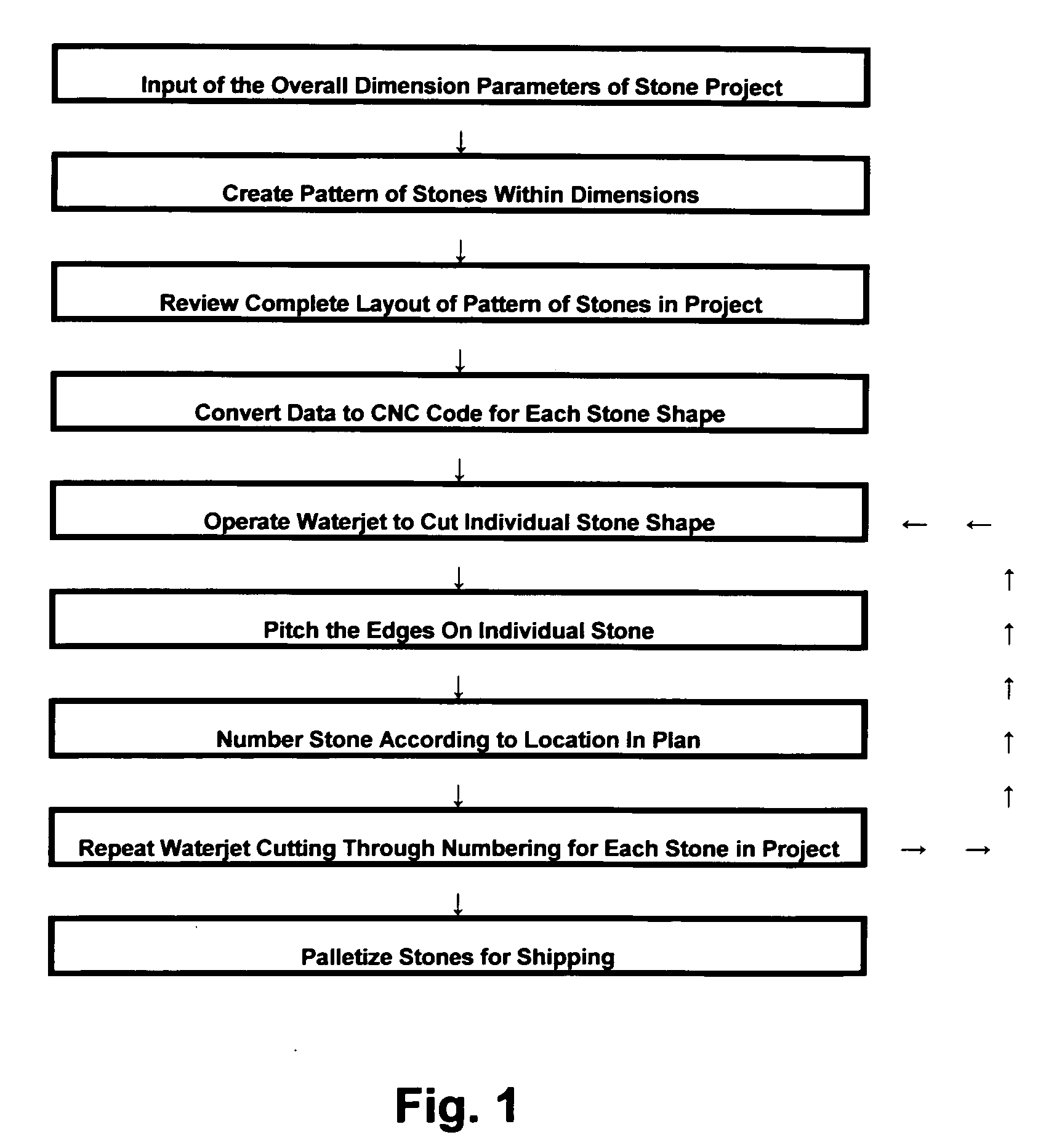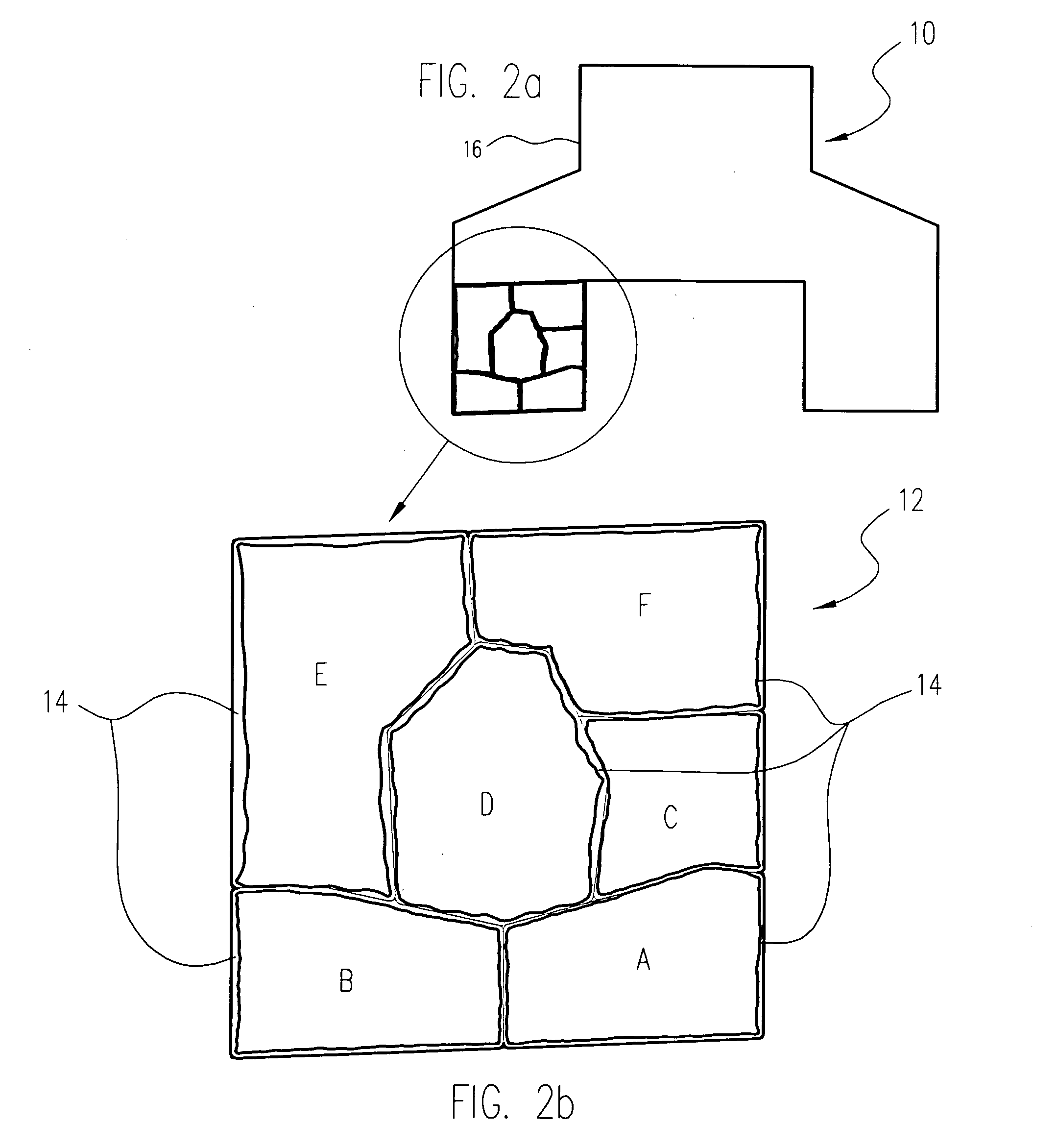System for designing, previewing, and cutting natural stone veneer to deliver ready for installation
a technology of natural stone veneer and installation, which is applied in the direction of grinding machine components, manufacturing tools, instruments, etc., can solve the problems of not having the chance to preview the overall pattern, manual, multi-step, labor-intensive methods, etc., and achieves the effect of facilitating installation and greater design potential
- Summary
- Abstract
- Description
- Claims
- Application Information
AI Technical Summary
Benefits of technology
Problems solved by technology
Method used
Image
Examples
example
[0095] 1) We set up the Computer Aided Design (CAD) file of the complete project and how it will look when fully installed. We started with the overall dimensions and profile of the installation and then filled in the middle area with the intersecting pieces to create the design pattern. This enabled us to print out a design proof for the customer and make any changes necessary to receive approval from the customer on the design. In this way, the customer can view a digital representation of how the natural stone veneer components will look when cut and installed in the finished project.
[0096] 2) We then broke apart the design into individual components that were to be cut. For the design plan for the project, each component was of unique shape. Optionally, there can be certain components that repeat throughout the pattern, and for such shapes, we cut the appropriate numbers of that same shape.
[0097] 3) We converted the CAD design for each unique component to a machine readable fo...
PUM
| Property | Measurement | Unit |
|---|---|---|
| distance | aaaaa | aaaaa |
| pressure | aaaaa | aaaaa |
| distance | aaaaa | aaaaa |
Abstract
Description
Claims
Application Information
 Login to View More
Login to View More - R&D
- Intellectual Property
- Life Sciences
- Materials
- Tech Scout
- Unparalleled Data Quality
- Higher Quality Content
- 60% Fewer Hallucinations
Browse by: Latest US Patents, China's latest patents, Technical Efficacy Thesaurus, Application Domain, Technology Topic, Popular Technical Reports.
© 2025 PatSnap. All rights reserved.Legal|Privacy policy|Modern Slavery Act Transparency Statement|Sitemap|About US| Contact US: help@patsnap.com



